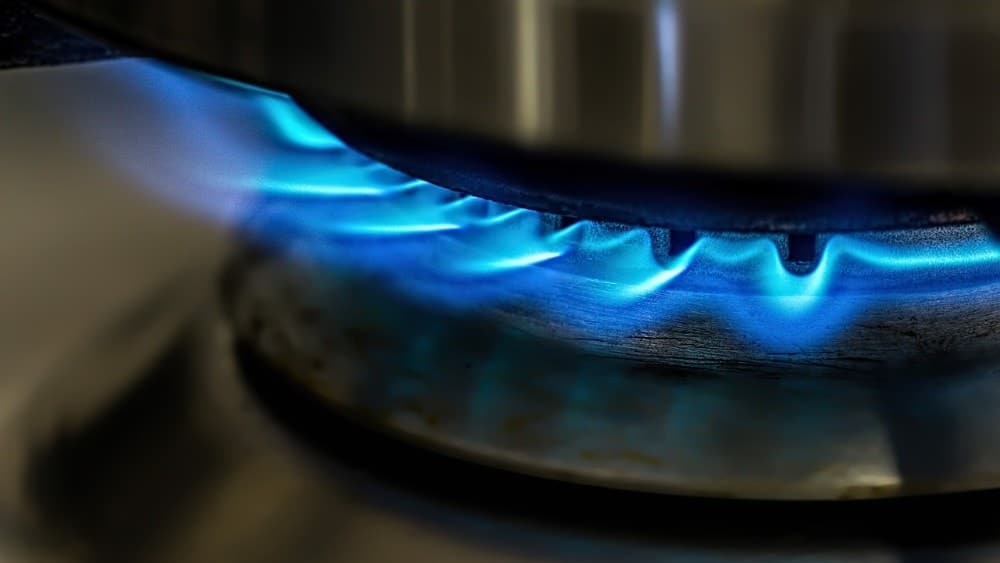Homebrewing can feel like a magical journey filled with creativity and experimentation. But if you’re just starting out, the world of brewing terms can seem overwhelming. That’s why I’ve put together this handy glossary to help you navigate the lingo and make your brewing experience smoother and more enjoyable.
Homebrewing Glossary of Terms
Here’s a handy glossary to help you navigate the essential terminology in homebrewing. Understanding these terms simplifies the brewing process and deepens your appreciation for the craft.
- ABV (Alcohol by Volume): This percentage indicates the amount of alcohol in your beer. For example, a beer with 5% ABV contains 5% alcohol in relation to its total volume.
- Beer Styles: These categories define different types of beer, such as ales and lagers. Each style has unique characteristics based on ingredients and fermentation methods.
- Boil: The process of heating the wort to a rolling boil. This step sanitizes the wort and extracts flavors from hops.
- Fermentation: This crucial phase converts sugars into alcohol and carbon dioxide, led by yeast. Fermentation times vary based on yeast strains and beer styles.
- Hops: These flowers add bitterness and aroma to beer. Different hop varieties can impart unique flavors ranging from floral to citrus.
- Malt: Malted grains serve as the backbone of beer, providing sugars for fermentation. Understanding malt types—like pale, caramel, and roasted—enhances your brewing knowledge.
- Pitching Yeast: This term describes the act of adding yeast to wort after cooling. Proper pitching rates ensure a vigorous fermentation.
- Sparging: This process rinses residual sugars from the malt during brewing. Sparging helps maximize sugar extraction for fermentation.
- Wort: The liquid extracted from malted grains after mashing. Wort is the foundation for all beer styles.
- Yeast: Microorganisms that ferment the sugars in wort, producing alcohol and carbon dioxide. Different yeast strains contribute distinct flavors and aromas.
These terms form the foundation of your brewing vocabulary and clarify your homebrewing experience. As you explore further, these definitions will help foster a deeper understanding of the art of brewing.
Common Brewing Terms
Understanding brewing terminology is vital for anyone starting their homebrewing journey. Here’s a breakdown of essential terms and concepts to guide you.

Equipment Terminology
- Brewing Kettle: A large pot used for boiling wort. The size can vary from 5 to 20 gallons, depending on batch size.
- Fermenter: A vessel for fermentation, typically made of glass or plastic, where yeast converts sugars into alcohol.
- Hydrometer: An instrument used to measure the specific gravity of the wort. It helps estimate alcohol content and fermentation progress.
- Mash Tun: A vessel that blends malted grains with water to extract sugars during the mash process.
- Keg: A container, often used for carbonating and serving beer. Sizes range from 5 gallons (corny keg) to 15.5 gallons (half-barrel keg).
- Bottle Capper: A tool that seals bottles with caps. It’s essential for home bottling to prevent oxidation.
Brewing Process Terms
- Boiling: The stage where wort is boiled to sanitize it and extract flavors from hops. It typically lasts between 60 to 90 minutes.
- Sparging: The process of rinsing grains with water to extract leftover sugars after mashing. This ensures optimal extraction of fermentable sugars.
- Pitching: The act of adding yeast to the cooled wort, initiating fermentation. Proper pitching rates are crucial for a successful brew.
- Conditioning: The maturation phase post-fermentation, where beer develops flavor and carbonation. It can occur in bottles or kegs.
- Lautering: The separation of liquid wort from solid grain after mashing. It’s crucial in achieving a clear final product.
- Racking: Transferring beer from one vessel to another, often used to separate beer from sediment after fermentation.
This glossary equips you with the foundational knowledge to navigate the world of homebrewing confidently. Each term plays a significant role in the brewing process, ensuring you understand the art and craft of brewing.
Ingredients in Homebrewing
Understanding the key ingredients in homebrewing is essential for creating quality beverages. Each component plays a unique role in the brewing process, influencing flavor, aroma, and overall character.
Grains and Malts
Grains serve as the foundation of my brewing endeavors. I primarily use barley, which contributes fermentable sugars and adds body. Malted barley enhances this process, with varieties like pale malt providing a base for most beers, while specialty malts, such as caramel or roasted malts, impart color and flavor. I often experiment with grains like wheat or rye for unique textures and tastes. When selecting grains, I look for factors like moisture content and color, which impact the final product.
| Grain Type | Role in Brewing |
|---|---|
| Pale Malt | Base malt, fermentable sugars |
| Caramel Malt | Flavor, color |
| Roasted Malt | Dark color, coffee or chocolate notes |
| Wheat Malt | Head retention, hazy appearance |
Hops and Additives
Hops play a crucial role in balancing flavors and adding bitterness to my brews. I vary the hop varieties based on the style I’m crafting, such as Cascade for IPAs, which brings a citrusy aroma. Timing when I add hops during the boil affects their contribution; early additions provide bitterness, while late additions enhance aroma.
Additives also enhance the flavor profile. I sometimes incorporate fruit, spices, or herbs during fermentation for unique twists. For example, adding orange peel and coriander creates a refreshing witbier. These ingredients allow for creativity, enabling me to tailor each batch to my taste preferences.
| Hop Type | Flavor Profile |
|---|---|
| Cascade | Citrus, floral |
| Citra | Tropical, grapefruit |
| Saaz | Earthy, spicy |
Achieving the right balance of grains, malts, hops, and additives elevates my homebrewing experience. It’s all about experimentation and finding the perfect combinations that resonate with my brewing philosophy.
Techniques and Methods
Understanding techniques and methods in homebrewing enhances both the brewing process and final product. Each technique contributes unique flavors, aromas, and overall quality to the beer.
Fermentation Processes
Fermentation is a crucial stage in brewing where yeast transforms sugars into alcohol and carbon dioxide. I focus on maintaining optimal fermentation temperatures, usually between 60°F and 75°F, to allow yeast to thrive. Primary fermentation lasts from one to two weeks, depending on the beer style. I often check specific gravity with a hydrometer to track fermentation progress.
For secondary fermentation, I transfer the beer to a different vessel. This clarifies the brew by leaving sediment behind. I sometimes add flavorings, such as fruits or spices, during this stage for added complexity. Conditioning, which can take several weeks, allows flavors to meld and mature, enhancing the final product’s quality.
Personalization Techniques
Personalization techniques offer a way to create distinct beers. I experiment with various ingredients, adjusting malt varieties, hop quantities, and yeast strains. For instance, using a specialty malt like caramel malt adds sweetness and body, while different hop varieties provide unique bitterness and aroma profiles.
Additionally, I encourage homebrewers to explore adjuncts, such as honey, maple syrup, or fruit purees, to craft distinctive flavors. For example, adding orange peel or coriander to a Belgian-style witbier can yield refreshing, citrusy notes. Every tweak produces a new experience, allowing for continuous exploration in my brewing journey.
Troubleshooting and Tips
As a professional brewer who loves sharing the art of homebrewing, I understand that challenges often arise. Here are some common issues and best practices to help you navigate the brewing process smoothly.
Common Issues in Homebrewing
- Incomplete Fermentation: Yeast might not finish fermenting due to low temperatures or lack of nutrients. When yeast struggles, check your fermentation temperature and consider adding nutrients to boost performance.
- Off-Flavors: Bad flavors can stem from various sources, including old ingredients, dirty equipment, or improper fermentation. To avoid this, always use fresh, quality ingredients and sanitize everything thoroughly before use.
- Flat Beer: A lack of carbonation often results from under-carbonation during bottling. When bottling, ensure you add the correct priming sugar based on your beer volume to achieve the desired carbonation level.
- Excessive Bitterness: Over-hopping can lead to a bitter taste that overwhelms other flavors. Adjust the amount of hops added and consider adding them later in the brewing process for aroma without excess bitterness.
- Strange Smells: Unpleasant odors during brewing might indicate contamination or a stuck fermentation. If you suspect contamination, double-check your sanitation process, and if fermentation stalls, monitor the temperature and use a hydrometer to assess gravity.
Best Practices for Success
- Sanitation: Prioritize cleanliness. Sanitize all equipment before and after use to prevent unwanted bacteria and wild yeast.
- Patience: Allow ample time for fermentation and conditioning. Good things take time, and rushing can lead to underdeveloped flavors.
- Temperature Control: Monitor fermentation temperatures closely. Each yeast strain has optimal temperature ranges that affect flavor and fermentation efficiency.
- Record Keeping: Document each brewing session. Jot down recipes, ingredient batches, and notes on fermentation to identify improvements and replicate successes.
- Experimentation: Don’t shy away from experimenting. Try different hop varieties, adjuncts, and malt types to discover what suits your palate. Each batch presents an opportunity to learn and refine your craft.
By addressing common issues and adhering to best practices, you enhance your homebrewing experience. With dedication and creativity, you’ll create delightful beverages and enjoy the brewing journey.
Conclusion
Homebrewing is all about creativity and exploration. With the glossary I’ve shared, I hope you feel more at ease navigating the sometimes overwhelming terminology. Understanding these terms can really make a difference in your brewing journey.
As you dive into this exciting hobby remember that every brew is a chance to learn and experiment. Don’t be afraid to try new ingredients and techniques. Each batch you create is a step toward mastering your craft.
Enjoy the process and celebrate your unique creations. Happy brewing!




